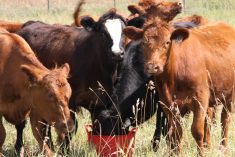Just days before a visit to Washington by the Canadian Senate agriculture committee to lobby for opening the American border to Canadian cattle, a Liberal member of the committee has accused the United States of hiding a huge BSE problem.
Nova Scotia senator Terry Mercer said at a committee meeting Feb. 15 he is not sure the Americans are enforcing the ban on feeding ruminant protein to ruminants.
He questioned whether the U.S. has hidden BSE cases. No American-generated BSE cases have been reported. The one U.S. case in Washington state involved an animal born in Alberta.
Read Also

Animal protection delivery to change in Saskatchewan
The Saskatchewan government is looking for a new agency to handle animal welfare after Animal Protection Services of Saskatchewan decided not to renew its contract next year.
“I would contend that I do not believe it,” Mercer said during an appearance by packer representatives to the committee.
“There have probably been hundreds of cattle in the U.S. that have BSE, and they have followed the shoot, shovel and shut up routine, or they processed the meat and exposed their citizens to bad product.”
Mark Ishoy, general manager of Gencor Foods Inc. of Kitchener, Ont., said he would not be drawn into speculation about Mercer’s allegation: “Why would I want to speculate on that at the moment?”
Ishoy was asked if he believes the Americans are properly policing their feed ban.
“I do not have any physical proof that would say it is not working in the United States at this point in time,” he replied.
Members of the Senate agriculture committee, led by Alberta Liberal Joyce Fairbairn, travel to Washington March 1 for three days of meetings with American legislators.
The lobby trip comes the week before the American government says it wants to open the border to trade in live young cattle March 7.
There is widespread skepticism in Congress over the move and a court case next week will deal with an attempt by the U.S. cattle producers’ group R-CALF to win an injunction against the border opening.














